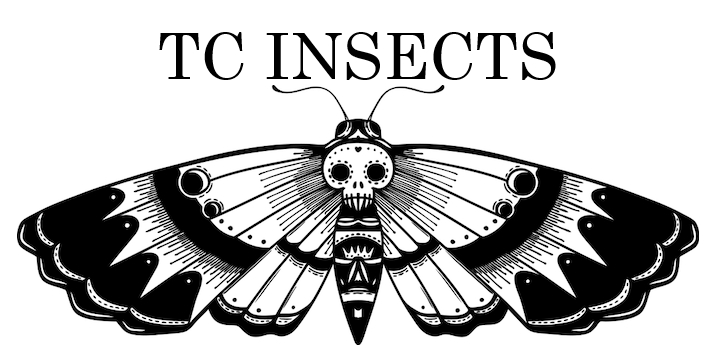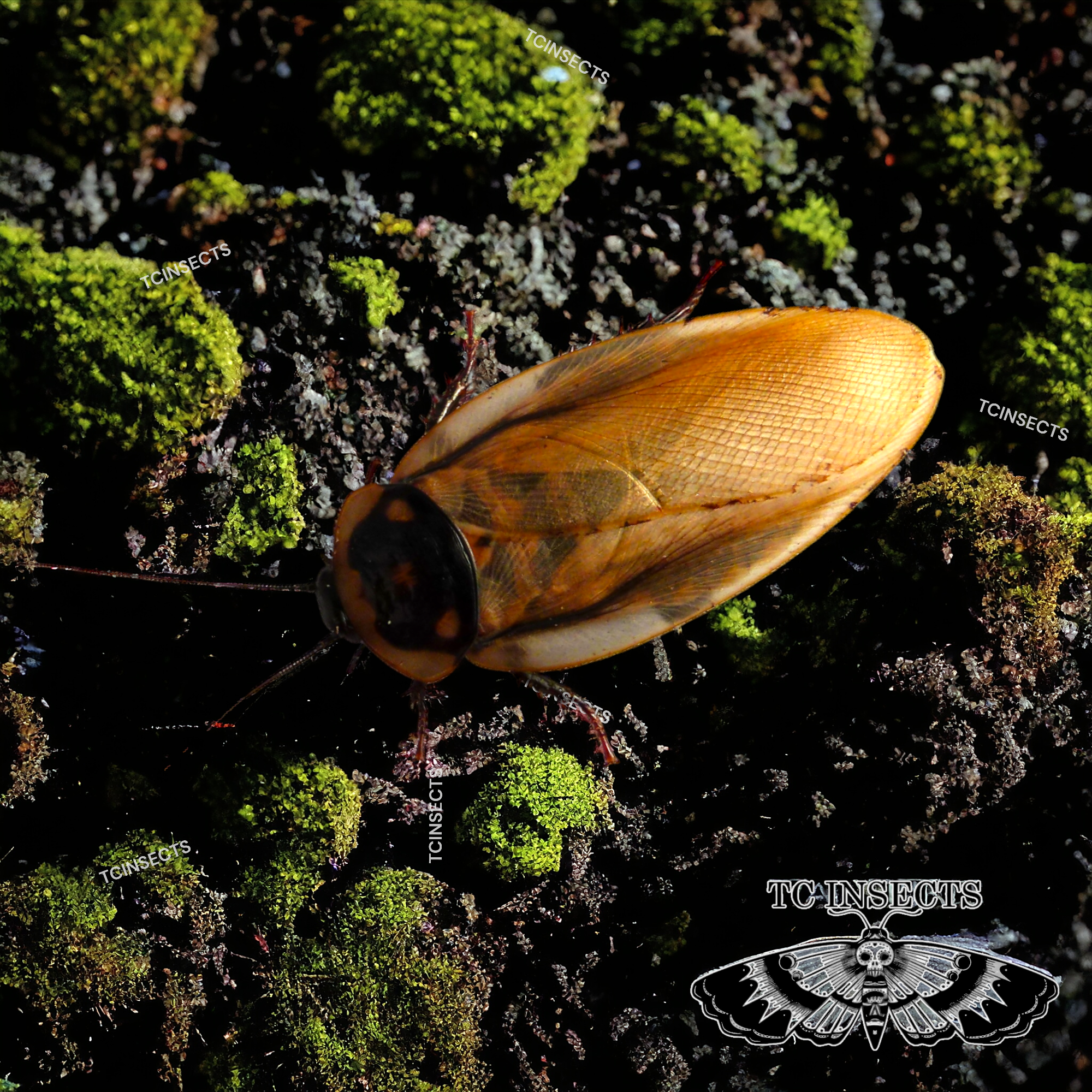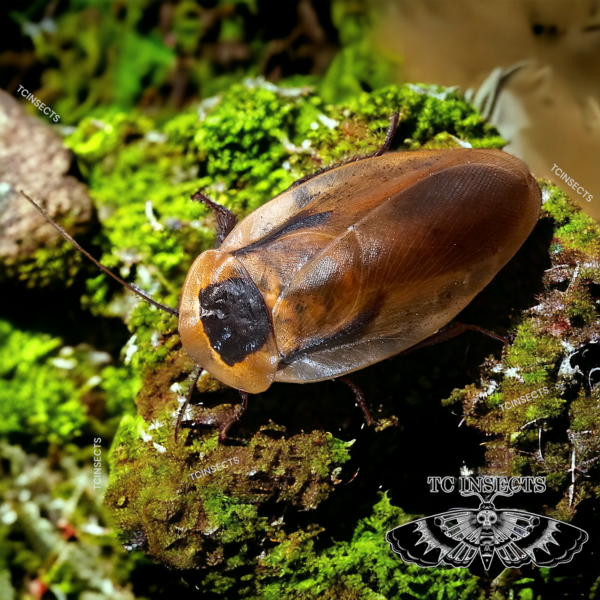Eublaberus serranus Care Sheet
Eublaberus serranus is a species of cockroach that is native to South America and commonly kept as a feeder insect or a pet. They are easy to breed and care for, and they have a striking appearance with six yellow spots on their pronotum (the shield-like structure behind the head).
If you are looking for a comprehensive guide on how to keep and breed Eublaberus serranus, you have come to the right place. In this care sheet, you will learn everything you need to know about this fascinating roach, including:
– Housing and substrate
– Temperature and humidity
– Diet and nutrition
– Breeding and life cycle
– Common problems and solutions
By following the tips and advice in this care sheet, you will be able to provide your Eublaberus serranus with the best possible conditions and enjoy watching them thrive.
Housing and substrate
Eublaberus serranus can be housed in a variety of enclosures, such as plastic bins, glass tanks, or plastic terrariums. The size of the enclosure depends on the size and number of your roaches, but a general rule of thumb is to provide at least one square foot of floor space per 100 roaches.
The enclosure should have a secure lid with ventilation holes or a mesh screen to prevent escapes and allow air circulation. You can also add some egg cartons, cardboard tubes, bark pieces, or other hides to provide your roaches with shelter and climbing opportunities.
The substrate is the material that covers the bottom of the enclosure and provides your roaches with a place to burrow and hide. Eublaberus serranus prefer a moist and organic substrate, such as coconut fiber, peat moss, potting soil, or a mix of these. The substrate should be at least two inches deep and kept slightly damp but not wet.
You can also add some leaf litter, wood chips, or sphagnum moss to the substrate to increase the humidity and provide your roaches with additional food sources.
Temperature and humidity
Eublaberus serranus are tropical roaches that require warm and humid conditions to thrive. The ideal temperature range for them is between 75 and 85°F, and the ideal humidity level is between 60 and 80%.
You can use a heat mat, a heat lamp, or a ceramic heat emitter to provide supplemental heat to your enclosure, but make sure to monitor the temperature with a thermometer and avoid overheating. You can also use a spray bottle, a humidifier, or a fogger to increase the humidity in your enclosure, but make sure to monitor the humidity with a hygrometer and avoid mold growth.
Diet and nutrition
Eublaberus serranus are omnivorous roaches that will eat a variety of foods, such as fruits, vegetables, grains, cereals, nuts, seeds, dog food, cat food, fish food, or chicken feed. You can also offer them some calcium supplements, such as cuttlebone, eggshells, or calcium powder, to help them molt and reproduce.
You should provide your roaches with fresh food and water every day and remove any uneaten food and waste regularly. You can use a shallow dish, a bottle cap, or a sponge to provide water to your roaches, but avoid using a water bowl or a cotton ball, as they can drown or get moldy.
Breeding and life cycle
Eublaberus serranus are prolific breeders that can produce large colonies in a short time. They are live-bearers, which means that the females give birth to live nymphs instead of laying eggs. The females can produce up to 30 nymphs per litter, and they can have several litters per year.
The nymphs are small and white when they are born, but they soon develop their characteristic six spots and darken in color as they grow. They will molt several times before reaching adulthood, which can take anywhere from six to eight months, depending on the temperature and food availability.
The adults can live for up to two years, and they can breed throughout their lifespan. The males have wings that cover their entire abdomen, while the females have shorter wings that expose their last abdominal segments.
Common problems and solutions
Eublaberus serranus are generally hardy and easy to keep, but they can encounter some problems if their care requirements are not met. Some of the most common problems and their solutions are:
– Escapes: Eublaberus serranus are fast and agile roaches that can easily escape from their enclosure if it is not secure. To prevent escapes, you should use a tight-fitting lid with ventilation holes or a mesh screen, and you can also apply some petroleum jelly, vaseline, or silicone sealant to the inner rim of the enclosure to create a slippery barrier.
– Wing nipping: Eublaberus serranus can sometimes nip or chew on each other’s wings, especially if they are overcrowded, stressed, or lack moisture. To prevent wing nipping, you should provide enough space, hides, and substrate for your roaches, and you should keep the substrate slightly damp but not wet.
– Mold and mites: Eublaberus serranus can sometimes suffer from mold and mite infestations, especially if their enclosure is too wet, dirty, or poorly ventilated. To prevent mold and mites, you should keep the substrate slightly damp but not wet, and you should remove any uneaten food and waste regularly. You can also add some beneficial insects, such as springtails, isopods, or dermestid beetles, to your enclosure to help with the cleanup and prevent pests.
Conclusion
Eublaberus serranus are a great species of cockroach to keep as a feeder insect or a pet. They are easy to breed and care for, and they have a striking appearance with six yellow spots on their pronotum. By following the tips and advice in this care sheet, you will be able to provide your Eublaberus serranus with the best possible conditions and enjoy watching them thrive.
If you found this care sheet helpful, please share it with your friends and fellow roach enthusiasts. You can also leave a comment below and let us know your experience with Eublaberus serranus or any questions you have about them. Thank you for reading and happy roaching!










Reviews
There are no reviews yet.